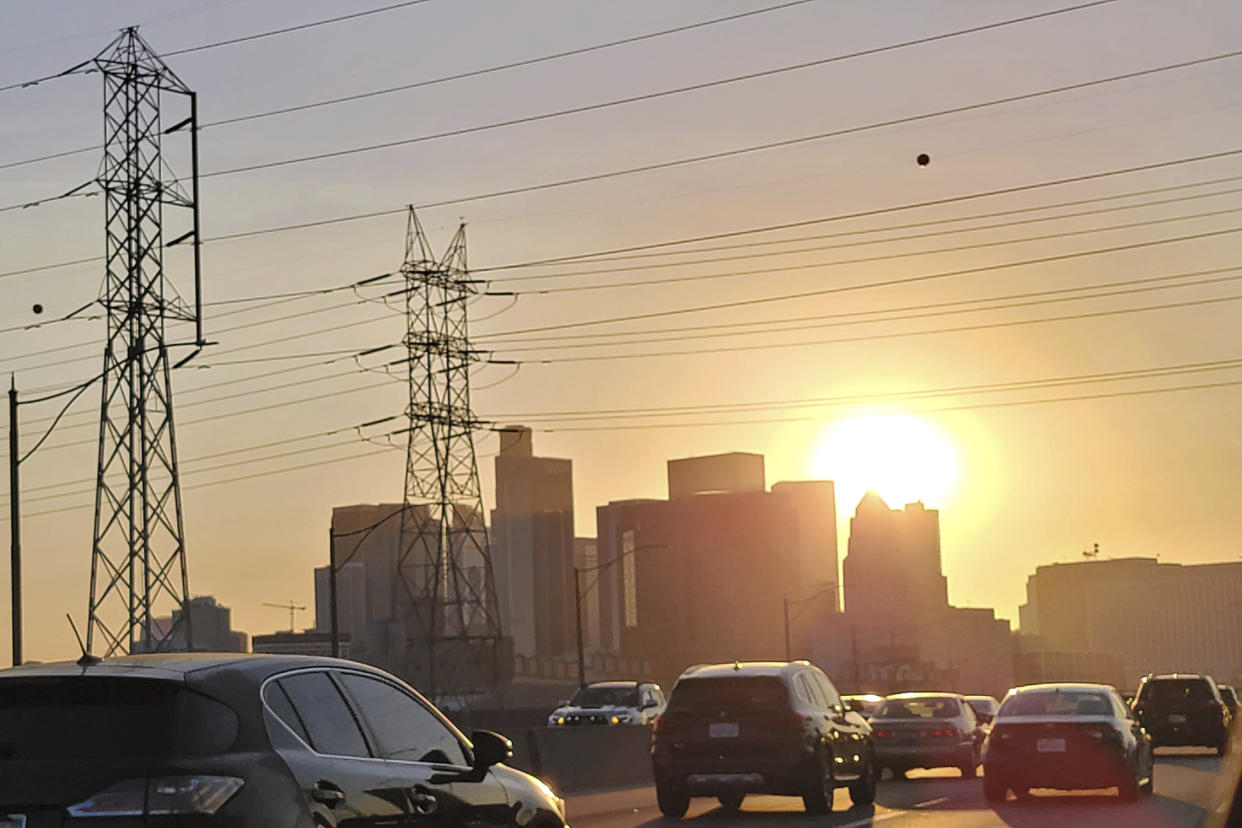Power strains 'an implicit cost of doing business' in California: San Jose Mayor
California avoided widespread power outages for yet another day Thursday as residents heeded warnings to conserve electricity.
But the mayor of the state’s third-largest city warned the constraints on the state’s power grid will likely remain well beyond the recent heat wave, and they could hinder the state’s ability to recruit major businesses.
“It certainly has a longer-term impact in terms of the competitiveness of our region and our state,” San Jose Mayor Sam Liccardo told Yahoo Finance Live (video above). “This is becoming, really, an implicit cost of doing business in California: having to invest private sector resources in additional backup power generation.”

The state is currently grappling with its hottest and longest heat wave on record. In San Jose on Tuesday, temperatures soared to 109 degrees Fahrenheit, shattering records, while downtown Sacramento set its own record of 116 degrees.
The scorching temperatures have pushed an already vulnerable power grid to the brink this month as California residents crank up their air conditioners to keep cool.
On Tuesday, power usage broke an all-time daily record of 52,061 megawatts, according to California Independent System Operator (CAISO), which oversees the state’s power grid. A statewide alert from the operator prompted Governor Gavin Newsom to urge consumers to dial up their thermostats to 78 degrees and higher to stabilize the grid.
CA is experiencing an unprecedented heatwave. This will be the hottest & longest on record for September.
Our energy grid is being pushed to its max. The risk of outages is real.
We need everyone to double down to save energy after 4pm today.pic.twitter.com/6QWozS0pyp— Gavin Newsom (@GavinNewsom) September 6, 2022
Liccardo said power disruptions to the city’s largest companies remained limited in part because of large investments the firms have made in securing backup generators and hydrogen fuel cells. San Jose sits at the heart of Silicon Valley, a hub for major tech firms including Cisco (CSCO), Adobe (ADBE), and Ebay (EBAY).
Instead, small businesses have taken the brunt of the hits. Restaurants, for example, have had to plan for a lack of refrigeration in the event of a potential blackout, prompting some to throw out food, he added.
“We really only averted widespread blackouts because of efforts of consumers to reduce their use," Liccardo said. “We were at a stage three emergency. A lot of businesses and offices here at City Hall and elsewhere went offline in the afternoon, turning off air conditioning and so forth to try to reduce the strain on the grid.”
'A great challenge for Silicon Valley'
California is no stranger to excessive heat, but human-caused climate change has only exacerbated extreme temperatures, according to studies.
The state’s rapid transition to clean energy has only complicated efforts to address California’s aging infrastructure and improve the grid’s reliability. Hydropower, for instance, has been diminished by record drought while solar energy remains limited by technology and its ability to only generate electricity during daylight hours.

And last week, the state legislature voted to extend the life of Diablo Canyon, California’s last operational nuclear power plant, reversing previous plans to shut it down. The plant generates nearly 9% of the state’s electricity and 17% of its carbon-free power.
Still, the challenges stemming from heat waves and drought have done little to curb the state’s ambitious goals to tackle climate change.
In August, California became the first state in the country to ban all new gas-powered vehicles by 2035, and last week the state legislature passed a slew of climate-related bills that sets California on a path to becoming carbon neutral by 2045. That plan would require the state to generate 80% of electricity from renewables by 2035 and reach 100% renewable electricity by 2045.
Liccardo insists those targets can be met, even in the face of current strains on the power grid.
He pointed to the city developing a transportation system that allows electric buses to be utilized as a source of energy as part of a larger “vehicle to grid” integration project. Liccardo noted that electric vehicles will likely become an important factor in expanding the grid's capacity — even as electricity demand increases — because they can sell energy back to the grid.
“I think this is a great challenge for Silicon Valley,” Liccardo said. “Deploying 3,300 megawatts in only a couple of years is really significant. And I think we're going to see that accelerate. In many ways electric vehicles can be part of the solution… using them essentially as mobile storage devices that can help support our grid when they're offline in times of peak power use for example in the early evenings. There's a lot of opportunity, I think, here for innovation to solve this problem.”
Akiko Fujita is an anchor and reporter for Yahoo Finance. Follow her on Twitter @AkikoFujita
Read the latest financial and business news from Yahoo Finance
Download the Yahoo Finance app for Apple or Android
Follow Yahoo Finance on Twitter, Facebook, Instagram, Flipboard, LinkedIn, and YouTube
